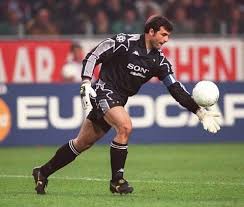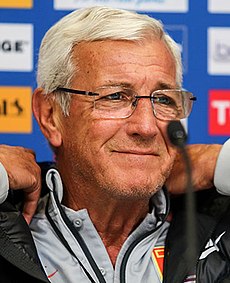Roberto Baggio - football icon
Azzurri star regarded as Italy's greatest player
The footballer Roberto Baggio, regarded by fans in Italy and around the world as one of the game's greatest players, was born on this day in 1967 in Caldogno, a small town situated about 10km (6 miles) north of Vicenza in the Veneto. Baggio's career spanned 22 years, most of them spent at the highest level, with Fiorentina, Juventus, Bologna, both Milan clubs and, finally, Brescia, winning the Serie A title twice, the Coppa Italia and the UEFA Cup. He played in three World Cups - in 1990, 1994 and 1998 - and achieved the unique distinction among Italian players of scoring at all three. He scored 318 goals all told, the first Italian for 50 years to top 300 in his career. Yet he spent almost the whole of his active playing days battling against injury. Over the course of his career, he had six knee operations, four on his right knee and two on the left, and often could play only with the help of painkillers. His fans believe that without his injuries, Baggio would have been placed in the same bracket as Pele, Diego Maradona and Lionel Messi as the best players in history. Italy's most famous football journalist, the late Gianni Brera, said Baggio was the greatest Italian player he ever saw, better than both Giuseppe Meazza and Gianni Rivera. Read more…
_________________________________________________________________
Michelangelo – Renaissance painter and sculptor
‘Greatest artist of all time’ left amazing legacy of work
Michelangelo di Lodovico Buonarroti Simoni - generally known simply as Michelangelo - died on this day in 1564 in Rome. His death came three weeks before his 89th birthday while he was still working on his last sculpture, the Rondanini Pietà, a version of the Virgin Mary with the body of the dead Christ. Michelangelo had been a sculptor, painter, architect and poet who had exerted an enormous influence on the development of art. During his lifetime he was considered to be the greatest living artist and he is now considered to be one of the greatest -- if not the greatest -- artists of all time. Michelangelo was born in 1475 in the small town of Caprese near Arezzo in Tuscany, which is now known as Caprese Michelangelo. He was sent to Florence to be educated but preferred to spend his time with painters, trying to copy the pictures in the churches, rather than be at school. At the age of 13 he was apprenticed to the artist Ghirlandaio and was asked to produce sculptures for Lorenzo dè Medici. Eventually he moved to Rome where he was commissioned to carve his first Pietà, a sculpture showing the Virgin Mary grieving over the dead body of Jesus. Read more…
_______________________________________________________________
Blessed Fra Angelico – painter
Talented Friar became patron of Catholic artists
The early Renaissance painter who became known as Fra Angelico died on this day in 1455 in Rome. Fra Angelico is regarded as one of the greatest painters of the 15th century, whose works reflected his serene religious attitude. He painted many altarpieces and frescoes for the Church and Priory of San Marco in Florence where he lived for about nine years. In 1982, more than 500 years after his death, Fra Angelico was beatified by Pope John Paul II in recognition of the holiness of his life. In 1984, Pope John Paul II declared him ‘patron of Catholic artists’. The artist was born Guido di Pietro at Rupecanina near Fiesole, just outside Florence, towards the end of the 14th century. The earliest recorded document concerning him dates from 1417 when he joined a religious confraternity at the Carmine Church and it reveals that he was already a painter. The first record of him as a Friar is dated 1423 and shows him to have been a member of the Dominican order. It is believed his first paintings were an altarpiece and a painted screen for the Carthusian Monastery in Florence, but these no longer exist. Read more…
________________________________________________________________
Roberta Vinci - tennis champion
Won five Grand Slam doubles titles with partner Sara Errani
The tennis player Roberta Vinci, one half of the most successful Italian women’s doubles partnerships of all time and one of only four Italian women to rank in the world’s top 10 at singles, was born on this day in 1983 in the major port city of Taranto in Puglia. Vinci and partner Sara Errani reached the women’s doubles final at eight Grand Slam tournaments between 2012 and 2014, winning five of them. They were the champions at the French Open and United States Open in 2012 and the Australian Open in 2013 and again in 2014. When they won the Wimbledon title in 2014 they became one of only five women’s doubles partnerships to complete a career Grand Slam of all the four majors. The pair, who reached No 1 in the world rankings in 2012, unexpectedly ended their five-year partnership in 2015, after which Vinci focussed on singles. Vinci’s finest achievement in singles came at the US Open in 2015, when she defeated world No 1 Serena Williams in the semi-finals before facing her compatriot and childhood friend Flavia Pennetta in the final, the first in a Grand Slam in the open era to pit one Italian against another. Read more…
Home
















